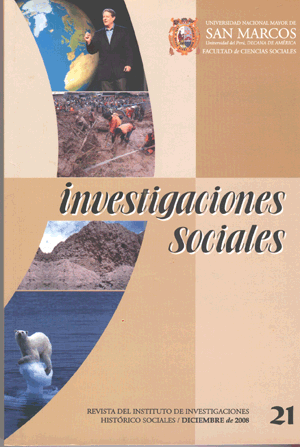El espacio del esclavo negro en las haciendas del valle de Cañete, 1747-1821
DOI:
https://doi.org/10.15381/is.v12i21.7195Keywords:
Cañete, rural architecture, colonial household tasks, slavery, black Peruvian Culture, use of the space.Abstract
This paper interprets the consumption of the spaces in the haciendas of the Valley of Cañete by the black slaves in the period 1747-1821. The exploitation and control they were putted under due to their situation and the precarious conditions of the lives and spaces they were confined to, originates different answers of resistance and adaptation, in consequence of the necessity of survival. These answers consisted in their means of expression, in the spaces of the hacienda and the beginning of the creation of their culture, in the new territory.Downloads
Published
Issue
Section
License
Copyright (c) 2008 Maria Angela Morales Polar

This work is licensed under a Creative Commons Attribution-NonCommercial-ShareAlike 4.0 International License.
AUTHORS RETAIN THEIR RIGHTS:
a. Authors retain their trade mark rights and patent, and also on any process or procedure described in the article.
b. Authors retain their right to share, copy, distribute, perform and publicly communicate their article (eg, to place their article in an institutional repository or publish it in a book), with an acknowledgment of its initial publication in Investigaciones Sociales.
c. Authors retain theirs right to make a subsequent publication of their work, to use the article or any part thereof (eg a compilation of his papers, lecture notes, thesis, or a book), always indicating the source of publication (the originator of the work, journal, volume, number and date).






